Evolution is defined as the change in frequency of certain traits across generations. The accumulation of new traits may lead to new characteristics or even new species over time. This means that, with time, enough changes can lead to the formation of a new species. Evolution is a continuous, extremely gradual process that has created the ecosystems and species that we are accustomed to today. Natural selection is one facet of evolution and is what helps to determine which traits will be around in each consecutive generation. Individuals pass their traits on to their offspring when they reproduce. A person inherits genes that determine their individual traits. Genes are small particles that individuals pass on to their offspring. These genes instruct the body to produce a certain trait, such as blue eyes or curly hair. When two individuals reproduce, their child will have a mix of each parents’ genes. An individual who is able to reproduce more frequently than others will increase the amount of their own genes that appear in the next generation.1 Thus, evolution is centered around the gene and can be seen as a sort of competition—which genes will survive into the next generation? What new combinations of genes will thrive?
Organisms who reproduce the most are able to pass on more of their own genes to future generations. The ability to reproduce successfully relies on many things, including the ability to find a mate, the resources to conceive and raise a child, and the ability to survive long enough for one’s reproductive system to fully mature. Evolution and natural selection do not necessarily favor the “survival of the fittest” but rather the “reproduction of the fittest.” A person may have excellent traits for survival and health, but if they do not transmit these genes on to their offspring, then ultimately their excellent genes will be lost. Natural selection works to proliferate the genes that function best and are most likely to promote reproduction in a species’ current environment. Those with low health or who are otherwise unable to reproduce during their lifetimes will end their genetic lineage upon their time of death; they may not have been well-suited to their environment. Those who do reproduce frequently will likely be able to thrive in their habitat, and natural selection tends to “choose” genes that suit the current environment. Additionally, organisms who are able to better adjust themselves to their environment are able to survive and reproduce. These adjustments are referred to as adaptations.2

Table of Contents
How did humans evolve? What makes our species unique?
Humans, as they exist today, came into being after a long period of evolution. Humans are most closely genetically related to great apes, especially chimpanzees. This is because humans evolved from a common ancestor with chimpanzees. This means that sometime between 6-12 million years ago, there was a species of ape that was the common ancestor of both humans and chimpanzees.3 Different environmental pressures allowed natural selection to gradually split the common ancestor into two groups that could not interbreed. This rendered chimpanzees and humans as different species. Each of these species went on to differentiate even more.4 Both species branched off and evolved traits that better suited them to their environmental niche. The ancestors of modern humans began as chimp-like, but eventually began to exploit their changing environment. This means that they learned how to thrive in this new ecosystem and make changes in order to improve their own chances of survival and reproduction. As forests turned into grasslands, these creatures needed a way to get from place to place efficiently. They also needed to be able to carry things such as children, food, and even tools while moving around. Being better suited to one’s environment allows an individual to reproduce more often. This led to evolutionary pressure that allowed our ancestors to walk on two feet instead of four, a uniquely human ability referred to as “bipedalism.” The spine, pelvis, and legs all needed adjustment to be able to walk bipedally.5 This led to a series of adjustments that created the intelligent, tool-using, child-rearing species that humans are today.
How does walking on two feet affect human sexuality?
Humans are uniquely bipedal mammals. This not only means that humans are able to walk on two legs, but also that this is our primary form of locomotion. Other mammals are able to walk bipedally for a short period of time, but it requires them to expend additional energy that walking on four legs does not. This particular trait is unique to humans because they evolved changes in their skeletal structure in order to be able to walk bipedally.5 These changes are reflected in several parts of the skeleton.
The Pelvis
Early in the evolution of the human lineage, biped walkers evolved a pelvic shape more suited to walking on two feet. Chimpanzees, who walk quadrupedally, have a taller and more upright pelvis. Humans adapted to bipedalism with a shorter, wider pelvis. This pelvic shape allows for efficient bipedal walking. Human thigh bones attach to the pelvis and go inwards, towards the center of the body, so that bipeds are able to walk without rocking from side to side as chimps do. This pelvic shape leads to many difficulties during childbirth that chimpanzees do not encounter.
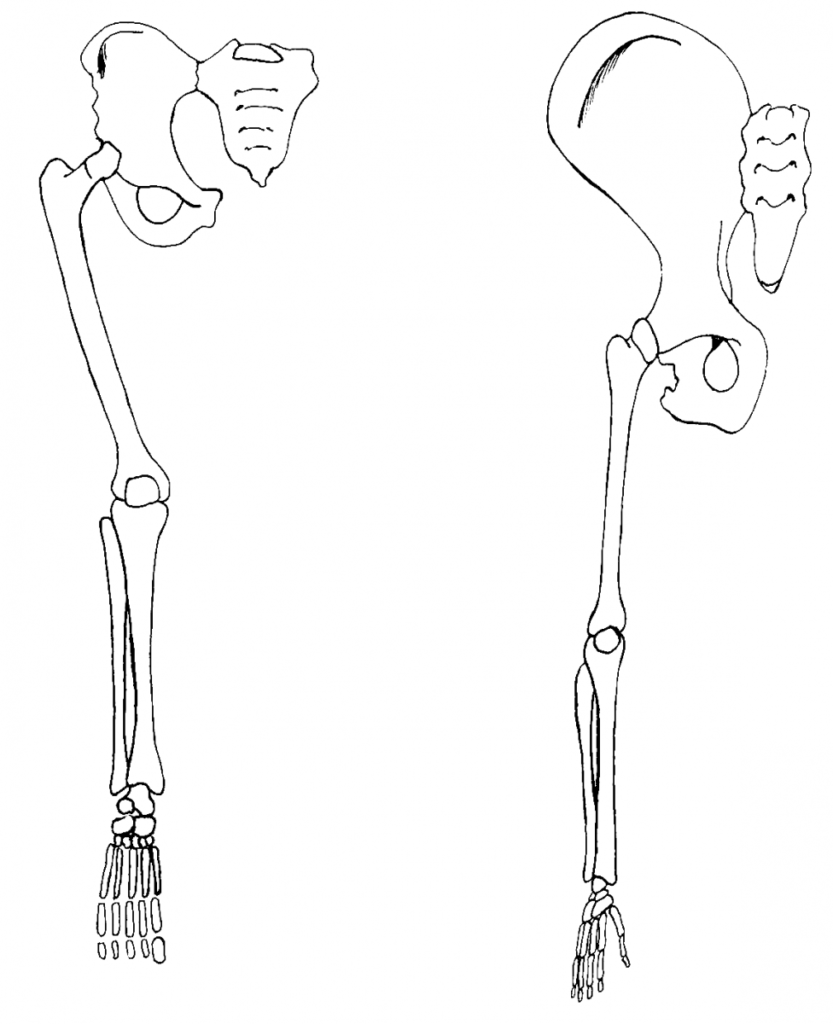
There must be an identifiable reason as to why humans have made these sacrifices in order to adopt our own unique form of transportation. However, bipedalism and quadrupedalism are equally efficient (if an organism has the proper skeletal structure), so why did humans undergo all of these changes? Humans need to carry things from place to place, so having our hands and arms free while walking allows us to do so with greater ease than quadrupeds. The human species are avid tool users, and we need to be able to carry these tools from place to place.2 We also need to be able to carry infants, who are unable to walk on their own. Because our pelvises are relatively small and have a much smaller opening through which infants are birthed, we have had to adapt to the difficulties presented by the biped skeletal shape. Our hips are about as wide as they can be, so it is our infants that have had evolutionary changes placed upon them. Newborn humans are altricial, which means that they are completely unable to take care of themselves. This altriciality occurs largely because their skulls need to be able to fit through the birth canal. This process is possible because infants’ cranial bones are not fully developed. The numerous bones in the skull have not fused together yet, and because of this the head is able to squeeze through the female’s vagina during birth. Post-birth, the skull undergoes further development and solidifies. This fragility requires extra attention and expended energy from the parents to ensure the safety of their offspring. It requires human parents to invest a large amount of energy into raising their children.7 This may seem inefficient, but we evolved this way for many reasons.


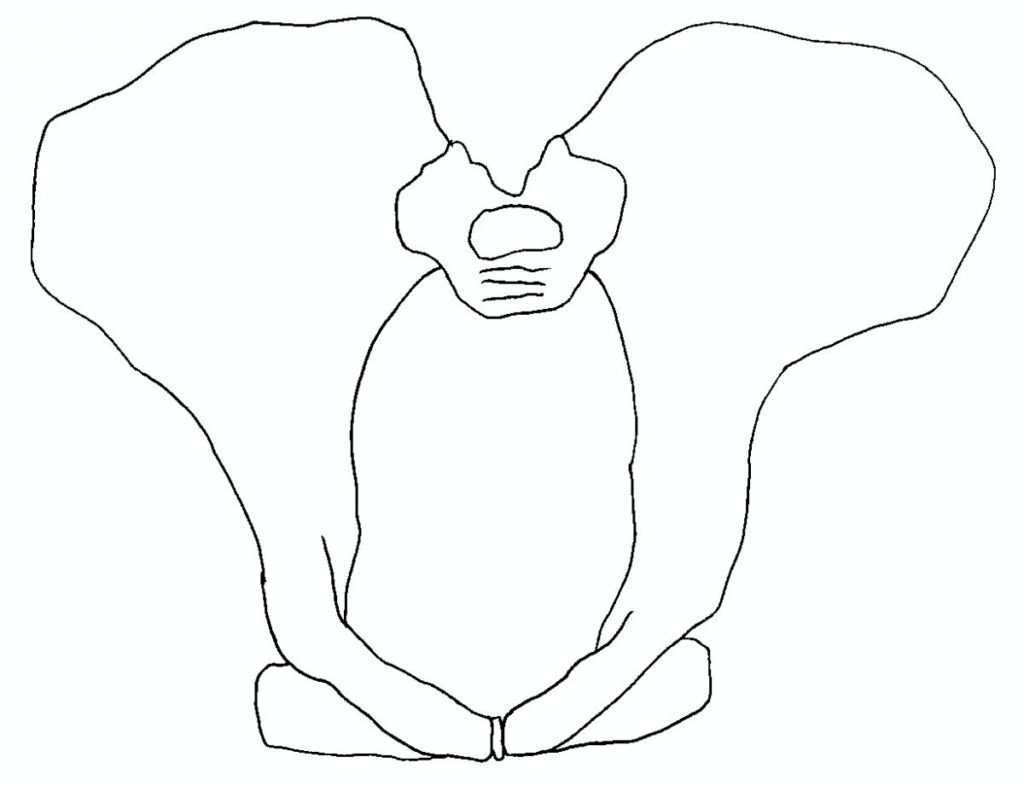

The Brain
Humans have by far the largest brain-to-body ratio of any living primate. Our larger brains were unable to fit through the birth canal when surrounded by a fully formed, hardened skull. Thus, we evolved altriciality in order to combat this dilemma. Our bigger brains also led to our invention of increasingly complex tools. Needing to carry these tools from place to place may have contributed to the evolution of bipedalism.6-7Thus, our larger brains shared a complicated interplay with many other adaptations, all of which enhance the unique and impressive abilities of the human lineage.
The Spine and the Skull


In quadrupeds, the spine is C-shaped in order to balance their weight while walking. They flex and stretch their spine while running, and this motion uses a lot of energy. Quadruped pelvises are parallel to the spine, so the thigh bones come out from underneath. Humans are unique in that their thigh bones are parallel to the spine, which allows for the upright posture that makes bipedalism so efficient. In humans, the spine still arches into the torso, but the neck and the lower spine bend towards the front of the body. In quadrupeds, the head attaches to the spine through the back of the skull, and the head is oriented in the same horizontal direction as the spine. In humans, the spine is attached to the bottom of the skull. The spine is vertical, and the front of the face is perpendicular to the spine. Despite the different spine shapes, each method of attachment to the skull allows for the facial features to face forwards. Human skulls balance on top of the spinal column, and this placement allows us to have large brains—it is much easier to hold the weight when the head is positioned this way. Chimpanzees and other quadrupeds must expend energy on growing and maintaining robust neck muscles in order to hold the head up properly. Human heads also have the ability to rotate from side to side, which is important for sight and hunting.4
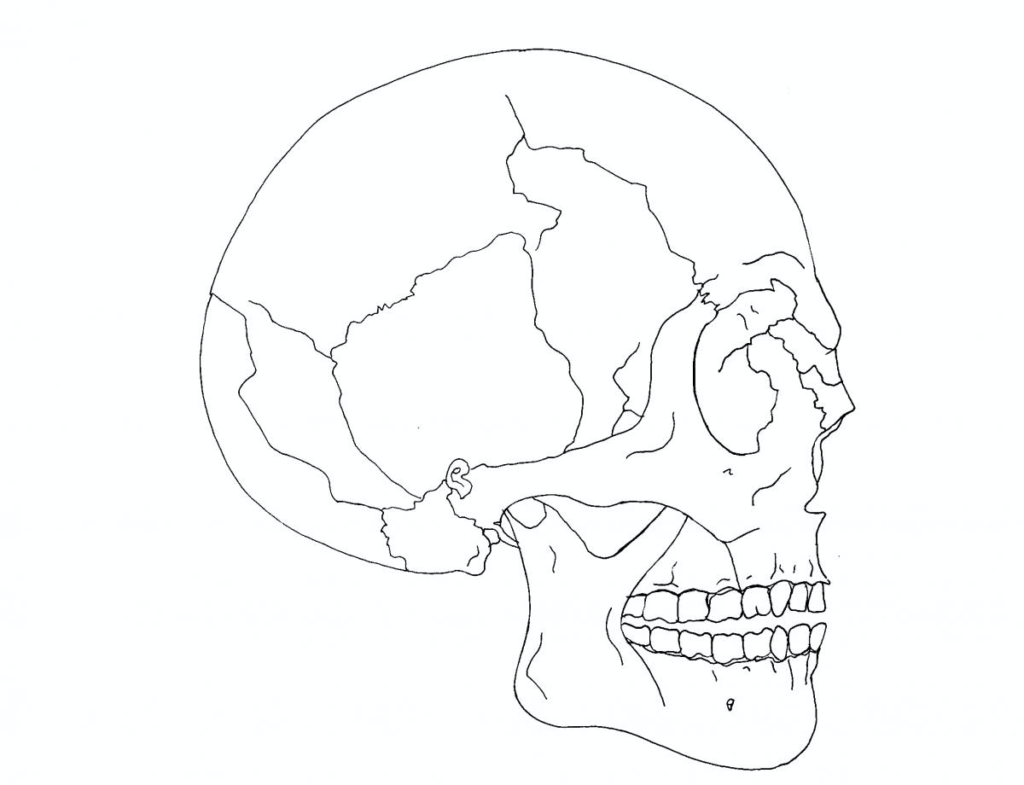
Despite these impressive abilities, our bodies are not perfect. Bipedalism is a relatively new adaptation (within the larger time scale of all the Earth’s species), and humans are still evolving in efficiency. Bipedalism first began to occur 15-20 million years ago. The structural and skeletal changes that occurred with bipedalism appeared only 2-3 million years ago. Thus, humans often experience the negative byproducts of this still-in-progress adaptation. Many humans experience lumbar pain and knee pain due to extra pressure being placed on these parts of the body.5,7
Life History Theory
Human parents need to invest a lot of resources into raising their offspring; however, energy is finite and must be distributed towards three categories: maintenance, growth, and reproduction.6 Developing children need to focus on growth, while a pregnant female needs to devote much of her energy towards reproduction. Because of this necessity, we must make tradeoffs throughout life between these three energy expenditures. These tradeoffs are known as life history tradeoffs, and they affect the trajectory of our life as we supply energy to different aspects of survival and reproduction.6 Organisms tend to slow or cease their somatic growth once they rear their first offspring in order to focus on reproductive energy expenditures. A more substantial body size can signal to potential mates that one has enough resources to maintain health, so it is important to time this transition well. Resources are a way to maximize one’s extrasomatic mating potential, so accruing these can offset costs that one may encounter throughout life.6 Because humans have such a long period of altriciality and subsequent development, parents must choose between focusing on existing offspring or producing new offspring. This is a tradeoff that can have dire consequences if parents choose incorrectly. This dilemma may be solved by the grandmothering hypothesis, a concept that is further analyzed below.7
Generally, other primate species pass away after they succeed their window of reproduction. However, human females live long after menopause, a phase of the reproductive cycle where they are no longer able to reproduce. How is this evolutionarily beneficial? It has been suggested that grandmothers take care of their children’s offspring. This allows their own children to focus on reproducing additional offspring. Grandmothers have a direct purpose and, thus, it is beneficial to live past menopause. Even though they can no longer have children of their own, they are able to maximize their own inclusive reproductive fitness by making sure that their genes survive in both their own children and as many grandchildren as possible.6
Kin Selection
Phenomena such as the grandmothering hypothesis are possible through a type of natural selection known as kin selection. It is an indirect fitness-increasing strategy that allows an individual to ensure the proliferation of their own genes while being able to expend energy on growth and maintenance. Individuals can either improve the fitness of their children’s or siblings’ offspring (as in the grandmothering hypothesis) or the fitness of their siblings. In both cases, they will be prolonging the lives, and hopefully enhancing the reproductive potential, of those who share their own genes. Whether or not it is beneficial to help one’s kin relies on how closely they are related.
An individual’s degree of relation to oneself is 1. This means that they have 100% of their own genes. An animal is 1/2 related to their parents and siblings. This means that, on average, every individual shares half their genes with their siblings and half with each parent. Reproduction passes half of each parents’ genes on to their children. Furthermore, an organism shares, on average, 1/4 of their genes with their cousins or their grandchildren. This pattern repeats with each generation. It is most likely that we will pass our genes on to the next generation if we ourselves reproduce. If we are for some reason unable or unwilling to have our own direct offspring, then it can benefit us evolutionarily to promote the survival of our relatives. The more closely related an individual is to the person they are helping, the more likely it is that they will help and the more substantial the help itself will be. For example, neglecting one’s own children to raise their siblings’ children may not be beneficial; but, raising your own grandchildren after menopause, when you cannot bear any more offspring of your own and do not have to promote the development of your own children, can be extremely beneficial. Enhancing one’s own fitness by increasing their children’s ability to have additional children ensures that as many of their genes as possible can pass into the next generation.8 As genes are the unit of natural selection and, thus, evolution, it is important that we continue our genetic lineage however possible, with a proportional cost to oneself.
Sexual Selection Theory in Humans
A subset of natural selection, sexual selection theory describes the mechanisms by which individuals are able to outcompete members of their own sex for mating success. This theory refers to both intrasexual and intersexual competition between members of a species. Intrasexual selection occurs when individuals of the same sex compete with one another for mates. Members of one sex who choose which members of the opposite sex they want to mate with are engaging in intersexual selection.9
Intrasexual Selection
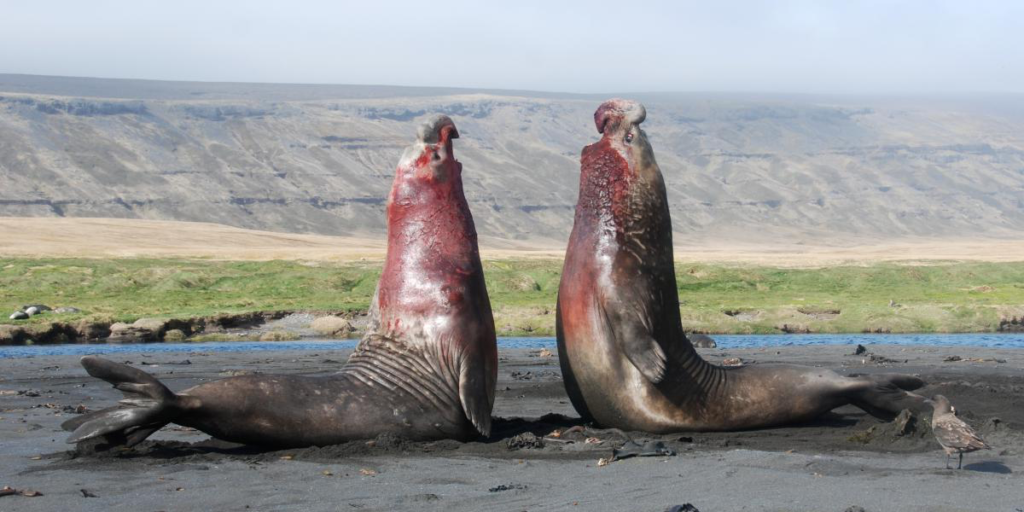
Intrasexual selection leads to fights between members of the same sex. Fights can be either due to intense competition for access to females or can serve as a mating display in order to impress and attract mates. Males in particular are selected to have increased aggression and a larger body mass as compared to females.9 A larger body size allows males to physically overpower their opponents. The ability to sustain a high level of body fat indicates an ability to hunt for and provide for oneself, and enhanced musculature indicates strength as well as general health. Additionally, males tend to experience early mortality as compared to females within their species. Males seek to maximize reproductive opportunities and are able to conceive many children at one time with little physical effort, as long as they have access to mates. Thus, selection for traits such as risk-taking and aggression will allow them to gain access to a higher amount of females. If a male does not fight or possess some other ability to attract high numbers of females, then he will not leave any progeny upon his death. Even if he survives to an old age, if he does not reproduce, then he has low reproductive fitness. Thus, if he does not fight for mates, then he will leave the same number of offspring as if he did not survive. Traits that promote this aggression towards mate procurement will allow males to produce a higher number of mates than those who do not possess these traits, regardless of whether these attributes cause their carrier to die young.9
Intersexual Selection
Females are particularly selective when choosing mates. This choosiness is because of an underlying evolutionary mechanism referred to as parental investment. In order to raise one’s own fitness by passing their genes on to the next generation, a female must produce offspring. These offspring must then pass on their genes to continue the family’s genetic lineage. Because genes are the unit on which natural selection and, thus, evolution operates, an organism’s evolutionary fitness relies on its ability to pass its genes on to as many reproductively viable offspring as possible. Females are biologically unable to reproduce as much as males can in the same time frame. A male can inseminate several individuals at any given time, and as long as they are ovulating, then he has the potential to successfully impregnate multiple females. Females, however, are only able to bear one child (or twins fathered by the same male) at any given time. Males’ reproductive success is limited by access to mates, and females’ reproductive success is limited temporally as they must invest a large amount of time, during which they cannot produce additional offspring, into both pregnancy and lactation. This discrepancy means that females are under much more evolutionary pressure to choose their mates well.10
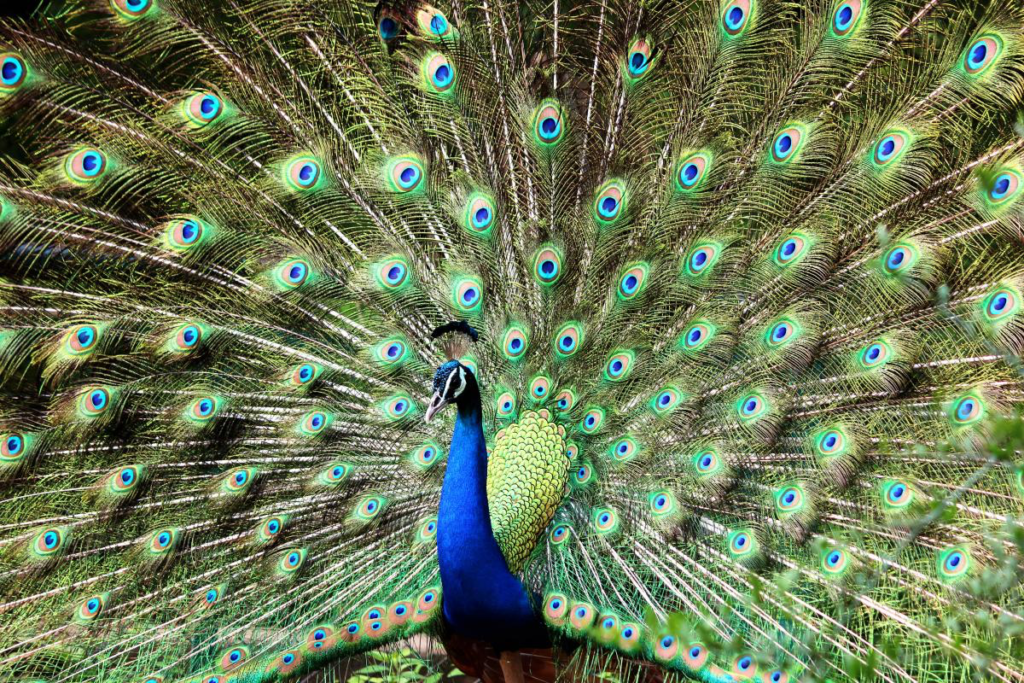
A phemonenon known as “peacocking” becomes relevant through males’ need to compete for mates. To increase their own reproductive success, males seek to display their genetic quality in an attempt to attract as many females as possible. Males of species other than humans display extravagant characteristics, one example of which is colorful plumage. A male peacock places an immense amount of energy into growing his extravagant tail feathers. However, these feathers do not help him to fly, are cumbersome while walking, and contain bright colors that can serve as a beacon to predators. For which reason do all of these seemingly life-threatening characteristics continue to be selected? In Darwinian fitness, it does not matter whether an individual lives for a long time. It merely matters whether one is able to reproduce and continue their genetic lineage. Traits that do not aid survival but that do enhance reproduction are selected for because these individuals are the most likely to pass these genes on to the next generation. A male’s ability to grow these impressive feathers demonstrates his ability to hunt for himself and nourish his body, as well as the superiority of his overall health. In addition, his ability to maintain these feathers, while continuing to feed himself and survive, serves as a signal to females that his genes are of high quality.11 As further explained below, females are highly attracted to individuals with “good” genes. Peacocking refers to males of any species displaying their superior access to resources by showing off seemingly unnecessary items or other indications of fitness. In humans, the phenomenon of peacocking can present itself through males’ purchasing of luxury items, such as expensive cars, in order to display their wealth and to attract females.12
Parental Investment Theory

Offspring possess the genes of both their mother and father, and in order to have offspring that are as reproductively viable as possible, a female will need to make sure that she is combining her genes with equally good, if not better, genes. Not only does a female have fewer opportunities to reproduce, but she also must invest more biological resources than her male counterpart into the creation of her child. A male provides the sperm that will fertilize the female’s egg. The act of insemination burns calories but is unlikely to have a large direct impact on the male’s biological resources. Additionally, the creation of sperm does not require much energy/resource investment from the male. Females provide the egg that the sperm fertilizes during conception. During pregnancy, a female’s body divests an immense amount of resources into growing her baby. After childbirth, a female must breastfeed her infant. The milk produced through lactation is another way in which the mother directly uses her own physical resources in order to ensure the viability of her offspring.13 The extensive use of resources necessary to create a child make it crucial that the female chooses a mate who will provide her offspring with “good” genes. The pairing of the mother’s and the father’s genes will not only determine the reproductive fitness of the child itself but also the parents’ inclusive fitness. As dictated by the previously explicated grandmothering hypothesis, through kin selection the mother can continue to increase her own post-reproductive fitness after she is no longer reproductively viable.
In conclusion, males may not invest a large amount of biological resources in the conception and intrauterine development of their offspring, but they generally provide resources in other areas, such as caloric nourishment in the form of hunted foods for their families, as well as providing status and protection for their families. One model of sexual selection suggests that mates are chosen simply based on their aesthetic value. In this theory, individuals are deemed quality mating choices based solely upon their physical appearance, which aligns with the peacocking phenomenon. Additionally, sexual selection favors males who provide for their partners, as females are attracted to them, and they are able to produce a higher number of quality offspring through providing protection as well as a steady food supply for their families.14
What is the difference between a male and a female?
Most species that reproduce by sexual reproduction, including humans, have two biologically defined sexes. Those who have an XX pair of sex chromosomes will possess female-typical traits, while those with an XY pair will possess male characteristics. However, not all species have the same differential sex chromosomes, so what determines whether an individual is male or female?
Gametes are the cells that combine during conception to eventually form a fetus. The female gamete is referred to as the egg, while the male gamete is referred to as the sperm. Eggs tend to be much larger than sperm. Individuals who produce the larger gamete are females, while those who produce the smaller gamete are males.

As described in parental investment theory, females expend more energy on creating their eggs than males spend on creating sperm. So females have already invested in their offspring before conception has occurred. After conception, the egg will be fertilized by the sperm, and the parents’ genes will combine to produce the offspring’s genotype. The fertilized egg then begins to divide through a process called mitosis, eventually becoming a fetus. Throughout the process of gestation, the mother expends a great deal of energy on not only growing a human being but also on providing it with the nutrients that it needs to develop and survive. After giving birth to her child, a mother must nourish it by breastfeeding. Gestating and lactating require a great deal of material energy to be expended by the mother, and additionally, this process requires a large investment of the mother’s time: up to 2-3 years during humans’ evolutionary history.9
Females’ reproductive potential is limited by time, and females are able to have fewer offspring than a male of the same species would be able to in the same time frame. Females are referred to as the “slow sex” and males the “fast sex.” As related to sexual selection as well as parental investment theory, the faster sex (males) will need to place energy into attracting females, as access to fertile females places a limit on males’ reproductive potential. The true difference between males and females in gamete size and the other sex-typical characteristics that we see expressed are simply a result of the fast, small sex-providing gamete attempting to maximize their own access to the slow, large sex-providing gamete.9
Attraction
Waist-to-Hip Ratio

In order to conceive successfully, it is essential that males mate with females who are not pregnant. This is because mating with someone who, at that time, cannot produce additional offspring is not relevant to increasing one’s reproductive fitness. During human evolution, individual males who mated with females who were not pregnant at that time produced more offspring. Their genes, and the trait that led to them avoiding copulation with pregnant females, were perpetuated with higher frequency into successive generations. Therefore, a mechanism that encourages males to mate with fertile (not pregnant) females developed. This mechanism relies on implicit cues, as many mating mechanisms do. A female who is pregnant will have a higher circumference around her waist than her hips, especially as she advances in her pregnancy. Males evolved to prefer females with a smaller waist in proportion to their hips. This proportional relationship is referred to as one’s “waist-to-hip ratio.” A measurement of 0.7 is the ideal waist-to-hip ratio for a female.15,16 A smaller waist as compared to one’s hips indicates that a female is not pregnant. Additionally, females with a larger hip circumference possess more gluteal adipose tissue, which is vital to building a fetus’s brain.16 Having larger hips/buttocks can indicate a female’s ability to create and birth healthy, viable offspring. Females, on the other hand, prefer a male with a 0.9 waist-to-hip ratio.17 These ratios in males are indicative of muscularity, which implies an ability to hunt and provide for one’s family. An ideal waist-to-hip ratio in both genders, as well as shoulder-to-hip ratio in males, displays one’s own genetic robustness and fertility to potential mates, as well as to adversaries in the case of males.15
Age
Females’ reproductive ability declines significantly with increased age. Males experience a less steep decline, but their gametes do become less viable as they age. Due to these inevitable declines, it became evolutionarily beneficial for individuals to prefer mates of a younger age.18 This preference for younger mates is far more pronounced in males, due to females’ shorter and younger window of reproductive potential. Females prefer males who have not yet reached senescence (deterioration due to advanced age), but they tend to prefer mates that are of an older cohort than the females that males prefer. A slightly older male is still able to procreate, but has gained social status, valuable hunting skills, and better abilities to provide resources for their family.
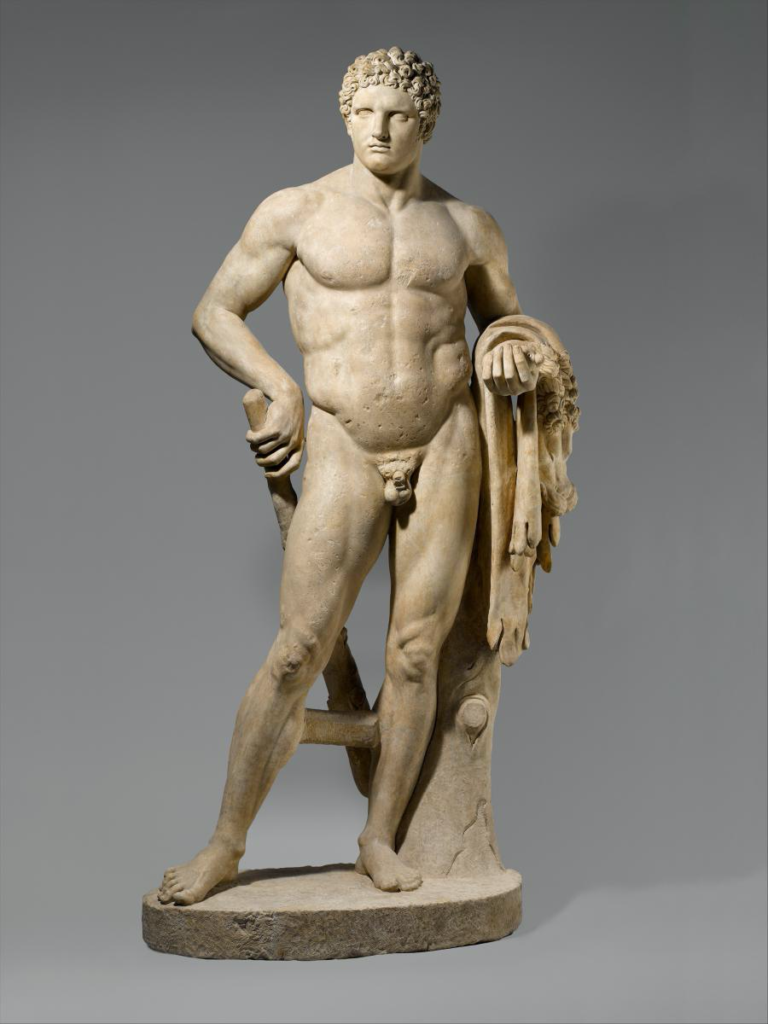
Cues of youthfulness oftentimes correlate with cues of good health. Clear, unwrinkled skin demonstrates a lack of disease as well as the skin elasticity that comes with youth. Healthy, long hair can indicate one’s ability to properly feed and provide for themselves, as well as a lack of disease. Strong, taut muscles can indicate health as well as an ability to hunt. It is important that one mates with an individual that is free of both genetic and environmentally caused diseases, as these can indicate an inability to produce viable offspring; it is important to find a mate with the skills needed to hunt and provide for one’s family, or to gestate one’s offspring.14
Symmetry
An individual’s mate value increases as a result of symmetrical features. Asymmetry is defined as an individual’s deviation from the typical left-right orientation of common features. During human evolution, it was biologically costly to mate with those who possessed asymmetrical characteristics. This is because asymmetry can be an indication of disease or otherwise poor genetic quality. Asymmetry can be a result of exposure to parasites or pollutants, an indication of a developmental condition, or due to the possession of dangerous genes.14 It is important that one mates with others who possess “good” genes in order to ensure that their own offspring will pass their genes on to the next generation. Symmetrical features are an indication of an individual’s genetic prowess and resulting mate quality. Females in particular seek mates with good genes due to their increased investment in the bearing of and nurturing of offspring.14 Aditionally, facial asymmetry can be a result of fitness-decreasing sexual practices such as incest. Poor genetic quality is a deterrent for those seeking potential mates, especially for high-investing female parents.
Humans are a complex species, exhibiting unique traits such as language abilities. Our ability to walk on two feet, our large brain size, and our capacity for tool use has left us with a number of evolutionary advantages. Humans’ continued survival and reproduction presents our species with the ability to further adapt to our environment and to gain further skills. The sociality of our species means that we have highly complex social relationships and interactions, and our sexuality is an extremely prominent part of many of our social perceptions and relationships. Our changing environment, largely due to human-made novelties such as buildings and the world wide web, presents our species with a new set of selection pressures to which we will one day adapt.
References:
- “Natural Selection” Biology Online, 15 Oct. 2016
- Boyd, Robert, PhD. How Humans Evolved. W. W. Norton & Company, Inc., 1997.
- Choi, Charles Q. “Human and Chimp Genes May Have Split 13 Million Years Ago.” Live Science, 12 June 2014.
- “What does it mean to be human?” Smithsonian National Museum of Natural History, 24 May 2017
- Birdsell, J. B. Human Evolution. Rand McNally & Company, 1972.
- Hill, Kim. Life History Theory and Evolutionary Anthropology. Wiley-Liss, Inc., 1993.
- Stanford, Craig B., Allen, John S., Anton, Susan C. Biological Anthropology: The Natural History of Humankind. Pearson, 2013. Print.
- Gardner, A., West, S. A., Wild, G. The Genetical Theory of Kin Selection. Journal of Evolutionary Biology, 2011.
- Roney, Jim. “Sexual Selection.” Human Mating Psychology, UCSB, 26 Jan 2017, Life Sciences Building. Lecture.
- Kokko, Hannah, Brooks, Robert, Jennions, Michael D., Josephine Morley. “The evolution of mate choice and mating biases.” The Royal Society, 2003.
- Zahavi, A., and Zahavi, A. (1997) The Handicap Principle.Ny: Oxford University Press, 25-40.
- Sundie, J. M., Kenrick D. T., Tybur J. M., Vohs, K. D., Beal, D. J. “Peacocks, Porsches, and Thorstein Veblen: Conspicuous Consumption as a Sexual Signaling System.” Journal of Personality and Social Psychology, 100, 2011.
- Trivers, Robert. “Parental Investment and Sexual Selection.” Sexual Selection and the Descent of man, edited by Campbell, Bernard G., Aldine, 1972, 136-179.
- Thornhill, R., Gangestad, S. W. Human Fluctuating Asymmetry and Sexual Behavior. Psychological Science, 1994.
- Braun, Margaret F., Bryan, Angela. “Female Waist-to-hip and male waist-to-shoulder ratios as determinants of romantic partner desirability.
- Gaulin, Steven, Lassek, William. Waist-hip ratio and cognitive ability: is gluteofemoral fat a privileged store of neurodevelopmental resources? Evolution and Human Behavior, 2008, 26-34.
- Fan, J., Dai, W., Liu, F., Wu, J. Visual Perception of Male Body Attractiveness. Proceedings of the Royal Society B: Biological Sciences, 2005, 219-226.
- Espino-Perez, Kathy. “Social Influence and Attraction.” Social Psychology, UCSB, 30 August 2017, Broida Hall. Lecture.
Last Updated: 15 February 2018.
